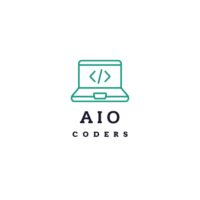Key Takeaways:
- Automation speeds up security response times and reduces manual delays
- Smart systems handle routine tasks so analysts can focus on strategy
- Integrated tools create consistency, accuracy, and improved morale
- The future of defence lies in combining human expertise with intelligent systems
You are already aware of how quickly cyber threats can unfold. One moment, an alert pings across your dashboard; the next, a critical system starts behaving strangely. Attackers have learned to move at machine speed, exploiting every delay between detection and action. Even the most capable teams can feel one step behind, trying to interpret floods of alerts while juggling too many tools at once.
That’s where automation enters the picture—not as a replacement for skilled analysts but as a force multiplier. By automating repetitive tasks and handling initial triage, systems free people to focus on what matters most: making decisions that require judgment, context, and insight. Across industries, the conversation is shifting from “Can automation help?” to “How fast can we implement it?”
In a security landscape where every second counts, intelligent automation is starting to close the response gap. It’s helping organisations identify and act on threats faster, reducing the time between detection and containment. The result isn’t fewer people in cybersecurity, but stronger teams capable of working at the same speed as the attacks they face.
The Race Against Attack Timelines
Modern cyberattacks unfold in minutes, sometimes seconds. Phishing campaigns, credential theft, and ransomware deployments can spread across networks faster than human operators can review alerts. In many cases, it’s not the lack of expertise that slows a response—it’s the sheer volume of noise. Every alert demands validation; logs must be collected, and systems checked before an action can be taken safely.
Manual triage was once manageable, but today’s attack surface is too wide. Cloud environments, remote endpoints, and interconnected services expand the number of potential entry points. A delay of even an hour can allow malware to encrypt shared drives or exfiltrate sensitive data. By the time human teams isolate the proper signal from the noise, the attacker may already be several steps ahead.
Automation reduces this gap by handling immediate containment tasks and orchestrating faster, data-driven responses. For example, an automated system can isolate an infected endpoint the moment suspicious behaviour appears, long before an analyst finishes reviewing the incident. Instead of waiting for instructions, the system acts according to pre-approved rules, creating a crucial buffer that limits damage and buys valuable time for deeper investigation.
The goal isn’t to remove humans from the loop—it’s to make that loop tighter and more responsive. With automation managing the early-stage flood of alerts, analysts can shift from firefighting to problem-solving.
How Smart Automation Supports Security Teams
Smart automation platforms act as connective tissue between a company’s security tools. They gather threat intelligence, correlate logs, and apply response playbooks across firewalls, endpoint protection, and monitoring systems. What once required several manual steps across multiple consoles can now happen in seconds.
For security analysts, this means less time spent chasing data and more time interpreting it. An automated platform might collect forensic details, generate a summary, and flag anomalies, so by the time an analyst reviews a case, most groundwork is already complete. This improves both efficiency and consistency—each response follows an approved procedure, minimising the chance of error or oversight.
Automation also helps smaller teams scale their impact. Where a handful of analysts might once have managed a few incidents per day, they can now oversee dozens. The technology doesn’t just accelerate the workflow; it standardises it. That consistency is vital when dealing with incidents that demand a quick, coordinated effort.
The deeper advantage lies in learning. Over time, these systems analyse past incidents and refine their responses. They identify patterns in what worked and what didn’t, turning historical data into smarter, faster decision-making. As organisations refine their automation strategies, they’re discovering that the best results come from balancing machine precision with human adaptability.
Integrating Intelligence with Automation
Automation alone can speed up response times, but intelligence makes it smarter. When automated systems can understand what they see, not just follow instructions, they become genuine partners for analysts rather than simple tools. This is where advanced analytics and adaptive algorithms come into play, allowing systems to interpret patterns, flag suspicious activity, and recommend next steps with growing accuracy.
Many modern security operations centres are using generative AI in cybersecurity to push automation beyond pre-written playbooks. Instead of following static instructions, these systems can summarise alerts, draft incident reports, and even simulate potential attack paths before they unfold. They process vast volumes of threat data far faster than a human could, presenting the most relevant information in clear, readable summaries.
The key benefit lies in context. Rather than alerting teams to every anomaly, AI can evaluate which threats matter most based on current vulnerabilities, system configurations, or historical behaviour. For example, suppose a login attempt originates from an unusual location but aligns with a known travel pattern for an employee. In that case, AI can deprioritise it while flagging others that truly need attention.
By combining automation’s speed with intelligence that interprets meaning, organisations gain a defence model that continuously improves. Analysts spend less time collecting and sorting data and more time validating and refining responses. This partnership between automation and adaptive intelligence marks a turning point—one where human insight drives strategy, and technology handles execution at machine speed.
Reducing Human Error Without Replacing Human Judgment
Automation works best when it complements human decision-making rather than replacing it. Security operations have always relied on judgment, experience, and intuition—qualities no algorithm can fully replicate. Yet even the most skilled professionals are prone to fatigue and oversight, especially when dealing with constant alerts. Smart automation provides a safeguard by enforcing consistency and reducing the room for mistakes that stem from pressure or distraction.
For example, once an incident is detected, an automated workflow can ensure every critical step—data capture, isolation, verification—is completed in order. No action is skipped, and no step is repeated unnecessarily. This structure keeps processes reliable even during high-pressure moments when manual execution might falter.
However, the human role remains essential. Automation can collect and correlate evidence, but people still decide how to interpret it. Analysts assess whether an alert signals a real compromise or a false positive, determine the broader impact on the organisation, and adjust the system’s parameters when threats evolve. The goal isn’t to eliminate human involvement but to give professionals the tools and time to think critically about each situation.
In practice, this partnership reduces both the mental load and the margin for error. Security teams can respond faster and more accurately, supported by systems that ensure every action aligns with established policies and best practices. When machines handle precision tasks and humans focus on strategy, the result is a defence posture that’s both faster and more resilient.
Building a Smarter, Faster Response Culture
Once automation becomes part of daily operations, it changes more than just workflow—it reshapes how teams think about security. Instead of reacting to problems as they appear, teams begin to anticipate them. Automated systems collect data across multiple environments, allowing analysts to review trends and prepare for emerging threats before they escalate.
This shift creates a culture focused on readiness and collaboration. Analysts gain confidence knowing that routine tasks are handled quickly and accurately. Managers see improved reporting accuracy and shorter response windows. Even cross-department communication improves, as consistent automation processes make it easier to share findings and coordinate action across teams.
Over time, organisations notice that automation isn’t a static tool but an evolving practice. It requires tuning, monitoring, and refinement as threats and business operations change. When integrated thoughtfully, it becomes an extension of the security team’s collective skill set. Automation also encourages more frequent training and review cycles, ensuring staff stay current with both the technology and the threats it helps manage.

The result is not just faster containment but a stronger sense of control. Security teams become proactive, not reactive, supported by a foundation that strikes a balance between efficiency and insight. When used correctly, automation fosters a continuous learning loop that strengthens defences at every level.
Conclusion: The Future of Cyber Readiness
The gap between attack and response is narrowing, and that’s changing what resilience looks like in cybersecurity. Automated systems and intelligent tools have proven their value in minimising delays and improving coordination, but they work best when guided by experienced professionals. The future isn’t about replacing people—it’s about enabling them to make better, faster decisions with the help of technology that keeps pace with modern threats.
As organisations continue to refine their defences, the focus will remain on collaboration between human insight and machine precision. The businesses that embrace this balance will be better equipped to handle whatever comes next. In a world where attacks evolve every day, the ability to respond swiftly and accurately may be the most powerful form of protection.

